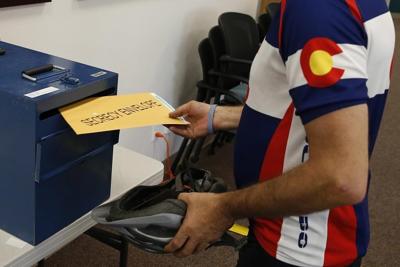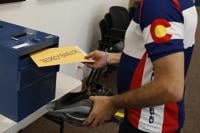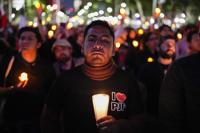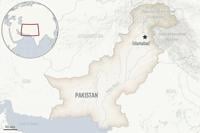WASHINGTON (AP) — Colorado voters will decide two statewide ballot measures Tuesday that would affect their pocketbooks as well as state coffers.
Proposition HH asks voters to allow the state to keep some amount of surplus tax revenue that the state constitution currently requires be refunded back to taxpayers. In exchange, the measure would lower property tax rates for 10 years. A portion of the funds the state retains would be spent on education and rental assistance. The proposal was introduced by Democratic Gov. Jared Polis and Democratic lawmakers.
Proposition II would allow the state keep and spend $23.7 million in tax revenue that has already been collected from the sale of tobacco and nicotine products. It would maintain current tax rates on tobacco and nicotine products and direct the revenue to be spent on preschool programs.
involve Colorado’s Taxpayer Bill of Rights, which is an amendment added to the state constitution in 1992. The amendment requires the state to refund any surplus tax revenue to voters, as determined by a formula based on inflation and population growth. It also requires voter approval for any tax increases.
A look at what to expect:
ELECTION DAY
Polls close at 7 p.m. MST, which is 9 p.m. EST.
WHAT’S ON THE BALLOT
The Associated Press will provide coverage for both statewide ballot measures, Proposition HH on reducing property taxes and Proposition II on maintaining the state’s nicotine tax.
WHO GETS TO VOTE
All registered voters in Colorado are eligible to vote in the election. Voters may register in-person through Election Day. Voters may cast their ballots by mail if they registered by Oct. 30.
DECISION NOTES
The AP does not make projections and will declare a winner only when it’s determined there is no scenario that would allow the trailing candidates to close the gap. If a race has not been called, the AP will continue to cover any newsworthy developments, such as candidate concessions or declarations of victory. In doing so, the AP will make clear that it has not yet declared a winner and explain why.
In Colorado, an automatic recount is triggered if the margin between the top two vote-getters is 0.5% or less of the leading candidate's vote total. The AP may declare a winner in a race that is eligible for a recount if it can determine the lead is too large for a recount or legal challenge to change the outcome.
WHAT DO TURNOUT AND ADVANCE VOTE LOOK LIKE
As of Wednesday, there were 4.4 million voters registered in Colorado. Of those, 26% were Democrats, 23% were Republicans and 49% were independent voters not affiliated with any political party.
In 2021, Colorado held a statewide vote on three ballot measures. Approximately 1.6 million ballots were cast in that election — 32% by Democrats, 31% by Republicans and 36% by independent voters not affiliated with any party.
Not surprisingly, voter turnout on statewide ballot measures is higher in big election years than those held in off-year elections. In 2020, turnout for two ballot measures was 75% compared with 44% for two measures in 2019
Colorado is an all vote-by-mail state. Voters have the option of casting ballots in person, but relatively few do. Of the approximately 1.6 million ballots cast in the 2021 statewide ballot measure vote, 99% of ballots were cast by mail and 1% were cast in person.
As of Wednesday, almost 577,000 voters had cast ballots before Election Day — 29% from Democrats, 32% from Republicans and 38% from voters not affiliated with any party.
HOW LONG DOES VOTE-COUNTING USUALLY TAKE?
In the 2022 general election for Colorado governor, the AP first reported results at 9:07 p.m. EST, or seven minutes after polls closed. The election night tabulation ended at 4:34 a.m. EST with about 75% of total votes counted.








































